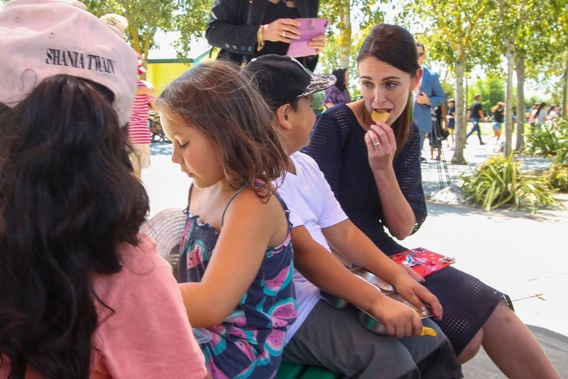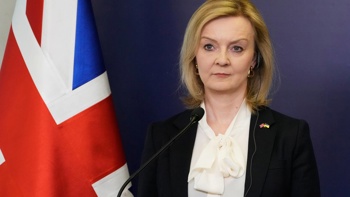
A massive $220 million expansion of free school lunches will divide many communities, with some schools joining the scheme while nearby schools miss out.
A tentative list of 640 schools due to get free lunches next year, from Te Hāpua in the north to Bluff in the south, has been issued as part of a tender for suppliers closing on October 21.
Another 60 schools are getting free lunches already, and 161 more will start getting them in this year's final school term starting today
in the pilot regions of the Bay of Plenty, East Coast, Hawke's Bay and Otago/Southland.
The expanded rollout from next year, which was given $220m over two years from Covid-19 funding in this year's Budget, aims to reach the 25 per cent of students - about 200,000 children - with the most disadvantage measured by the new "equity index".
The index is based on 26 facts about every child, including the parents' incomes, education levels, benefit histories, criminal records and ages when the child was born, plus how often the child has changed homes and schools and been reported to Oranga Tamariki.
The full list of who's getting free school lunches
The new system is much more detailed than the old decile system, which only considered five factors averaged across each neighbourhood and is being phased out.
The two systems still produce very similar results. The schools listed as being offered free lunches include 94 per cent of decile-1 state and integrated schools, 89 per cent of decile-2 schools, 74 per cent of decile-3 schools, 47 per cent of decile-4 schools and just 16 per cent of decile-5 schools.
But the need to draw a line to reach only 25 per cent of students nationally means that some neighbouring schools have ended up on opposite sides of the line.
in Manurewa, where all except two schools are below decile 5, 20 schools are listed as getting free lunches but five other low-decile schools are not: the Homai Blind and Low Vision Education Network (decile3), Everglade School (4), Hillpark School (4), Manurewa Central School (2) and St Anne's Catholic School Manurewa (2).
St Anne's principal Glen Ryan said his school "wasn't invited to be a part of the scheme - very interesting as the schools around us are all involved".
"We would love to be involved as our children come from the same streets as the pupils in schools who will have access," he said.
In Māngere-Ōtāhuhu, where all schools are decile 5 or below, 27 schools are listed but six are not: Al-Madinah School (decile 2), Māngere Bridge School (3), Mt Richmond Specialist School (2), St Joseph's School Ōtāhuhu (1), Waterlea Public School (5), Zayed College for Girls (3).
Asin Ali, principal of the Muslim boys' school Al-Madinah, said his school was not invited to join the scheme.
"We are a decile-2 school and a number of parents are struggling, so I think we should be considered in line with other schools in the area," he said.
Māngere Bridge principal Stephanie Tawha said she assumed her school had been left out because it is in a slightly higher bracket, decile 3.
Kathy Dooley, principal of Mt Richmond Specialist School, said: "We seem to have been left out."
Nationally, Catholic and other integrated schools seem to be less "disadvantaged" on the equity index than they appeared to be under the decile system. In deciles 1 to 5 only 38 per cent of Catholic schools and 36 per cent of other integrated schools are on the list for free lunches, compared with 69 per cent of decile 1-5 state schools.
At the other extreme, all except two of the country's 72 decile 1-5 kura kaupapa Māori have been offered free lunches. In fact they are the only schools listed in Auckland's Upper Harbour and Albert-Eden local boards.
Herald inquiries so far have found only 11 of the 861 schools listed (1.3 per cent) who have decided not to accept free lunches.
Ōtara's decile-1 Tangaroa College principal Davida Suasua said simply that she "opted out".
Pat Newman, principal of decile-2 Hora Hora School in Whangārei, said his school qualified for lunches worth $400,000 a year under the scheme, but there was no capital funding to upgrade the school's 12 kitchens to the required commercial kitchen standard.
"It was basically bureaucracy gone mad," he said.
Paula Passfield of decile-1 Fairburn School in Ōtāhuhu said she opted out because of a "very tight" time frame to decide on it, but would consider joining in future years.
Dr Kelvin Kannan of decile-1 St Anthony's Catholic School in Huntly, Michelle Ryan of Firth School in Matamata, Cathy Dewes of Te Kura Kaupapa Māori o Ruamata in Rotorua, Kahu Walker of Edgecumbe School and Ani Mohi of Te Kura Mana Māori o Maraenui east of Ōpōtiki all said their students did not need free lunches so they decided to make space for more needy schools.
Ministry of Education deputy secretary Katrina Casey said the list of schools in the scheme was "not definitive" because some schools are still making up their minds.
"As one school or kura declines, this opens up an invitation to another school. We have yet to determine the schools to replace those that have declined," she said.
The tender documents require all suppliers to pay staff at least the living wage of $22.10 an hour.
The contracts for the schools starting next year commence on February 1 and Casey said actual delivery of lunches would start during the first term of the school year.Jacinda Ardern shared a child's free school lunch at the Flaxmere Primary School for the launch of the pilot programme in February. Photo / Paul Taylor
The Labour Party's election policy includes a further $375m to keep funding the lunches beyond the two years of Covid funding. The National Party has not allocated any funding to it.
Take your Radio, Podcasts and Music with you








